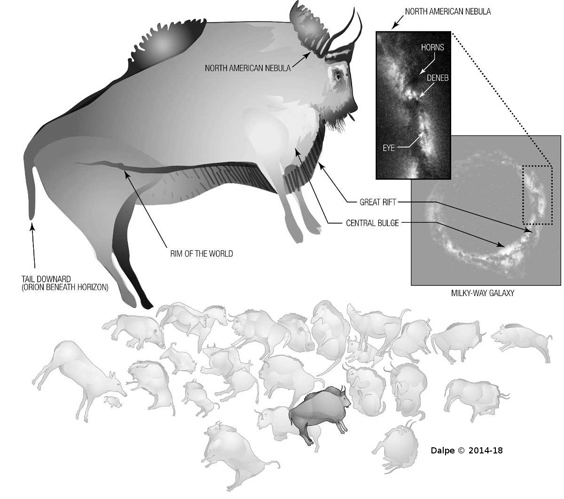@Christy and @beaglelady, you two have both spent some time discussing the evolution of languages, yes?
Well here’s an article that I thought was fun … if it has already been posted here, I’ll delete the thread… or maybe find some New Article!
https://www.ncbi.nlm.nih.gov/pmc/articles/PMC3338724/
PLoS One. 2012; 7(4): e35289.
Published online 2012 Apr 27. doi: 10.1371/journal.pone.0035289
Dating the Origin of Language Using Phonemic Diversity
By Charles Perreault# 1 and Sarah Mathew# 2 , *
Michael D. Petraglia, Editor
Abstract
Language is a key adaptation of our species, yet we do not know when it evolved. Here, we use data on language phonemic diversity to estimate a minimum date for the origin of language. We take advantage of the fact that phonemic diversity evolves slowly and use it as a clock to calculate how long the oldest African languages would have to have been around in order to accumulate the number of phonemes they possess today. We use a natural experiment, the colonization of Southeast Asia and Andaman Islands, to estimate the rate at which phonemic diversity increases through time.
Using this rate, we estimate that present-day languages date back to the Middle Stone Age in Africa. Our analysis is consistent with the archaeological evidence suggesting that complex human behavior evolved during the Middle Stone Age in Africa, and does not support the view that language is a recent adaptation that has sparked the dispersal of humans out of Africa. While some of our assumptions require testing and our results rely at present on a single case-study, our analysis constitutes the first estimate of when language evolved that is directly based on linguistic data.
Introduction
A capacity for language is a hallmark of our species [1], [2], yet we know little about the timing of its appearance. Language appears in the archaeological record only recently, with the advent of lexicographic writing around 5,400 years ago [3]. Therefore, investigators have addressed the origin of language by studying the evolutionary history of anatomical features [4]–[7] and genes [8]–[15] that are associated with speech production. This research suggests that other Homo species had the ability to produce speech sounds that overlap with the range of speech sounds of modern humans, and that species such as Neanderthals possessed genes that, in humans, play a role in language. But we do not know whether these archaic hominins actually produced speech, and if so, to which extent it was similar to our capacity for language. As of now, the anatomical and genetic data lack the resolution necessary to differentiate proto-language from modern human language. Until this resolution is improved, we need alternative lines of evidence in order to better understand the timing of language origin.
Here, we use phonemic diversity data to date the origin of language. Phonemic diversity denotes the number of perceptually distinct units of sound–consonants, vowels and tones–in a language. The worldwide pattern of phonemic diversity potentially contains the statistical signal of the expansion of modern humans on the planet [16]. As human populations left Africa, 60–70 kya, and expanded into the rest of the world [1], [17], they underwent a series of bottlenecks. This serial founder effect has led to a clinal loss of genetic [18]–[20], phenotypic [21]–[23] and phonemic diversity [16] that can be observed in present-day human populations. African languages today have some of the largest phonemic inventories in the world, while the smallest inventories are found in South America and Oceania, some of the last regions of the globe to be colonized.
The loss of phonemes through serial founder effect is consistent with other lines of evidence that indicate that phonemic diversity is determined by cultural transmission forces, rather than cognitive or functional constraints. First, phonemic diversity varies considerably among languages, and several languages function with a restricted number of phonemes. Rotokas, a language of New Guinea, and Pirahã, spoken in South-America, both have 11 phonemes [24], [25], while !Xun, a language spoken in Southern Africa has 141 phonemes. Second, as predicted by theoretical models linking cultural transmission and demography [26]–[28], phonemic diversity correlates positively with speaker population size [16], [29].
And finally, phonemic diversity also correlates positively with the number of surrounding languages [16], suggesting that phonemes, like other cultural traits, can be borrowed. Phonemic diversity not only evolves culturally, but it also evolves slowly [16]. That the languages outside of Africa might have not recovered their original phonemic diversity, despite thousands of years of history in their respective continent, and despite all the historical, linguistic and social factors that lead to linguistic change [30]–[36], suggests that phonemic diversity changes over long time scales. Here, we take advantage of the fact that phonemic diversity evolves culturally and slowly, and use it as a slow-clock to date the origin of language.
[see link for rest of discussion]

